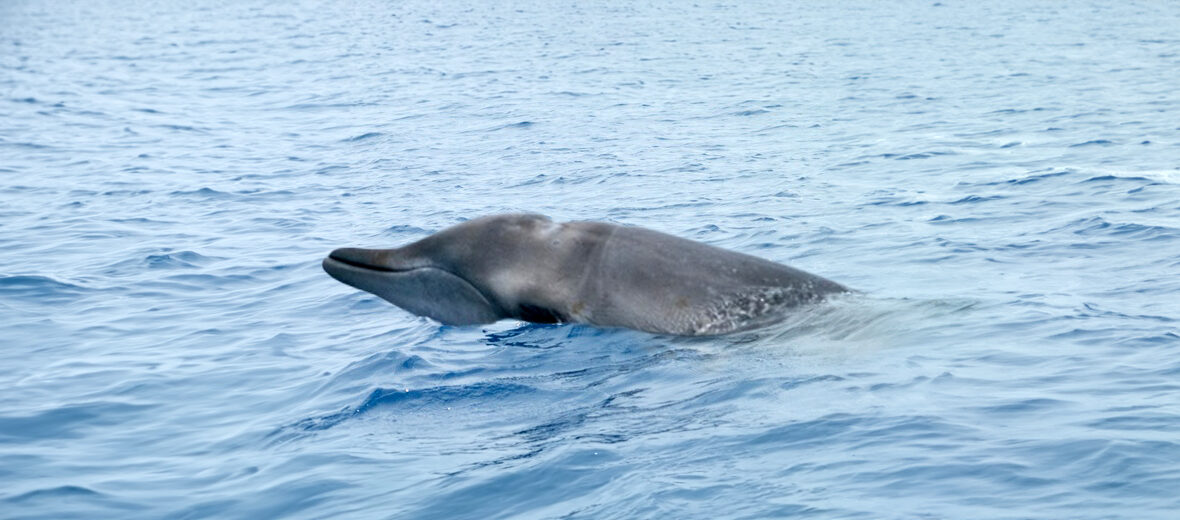
The Perrin’s beaked whale is a shy member of the toothed whale suborder. There are over 20 species of beaked whales recognized to date. These whales face the threats of overfishing and subsequent bycatch (getting caught in gill nets and long lines, which can cause drownings); pollution in the form of garbage, agricultural runoff, and oil & gas spills; and climate change, which can cause changes in water temperatures that drive their food source further north. The IUCN lists these rare cetaceans as Endangered.
First the Stats…
Scientific name: Mesoplodon perrini
Weight: Up to 1,543 lbs.
Length: Up to 14.44 feet
Lifespan: Up to 27 years
Now on to the Facts!
1.) Their population trend is listed as decreasing. Their total estimated numbers, as of 2020 were only at 1,164 wild individuals.
2.) These whales can be found off the coast of California and Baja California, in North America.
3.) The genus name Mesoplodon hails from the Greek translations of meso- (middle), – hopla (arms), – odon (teeth), and may be translated as “armed with a tooth in the center of the jaw”.
4.) Perrin’s beaked whales were described as a new species in 2002 by Dalebout et al. based off of 5 individuals stranding on the coast of California between 1975 – 1997, which were originally identified as another species.
5.) The common and specific names of Mesopledon perrini are in tribute to the cetologist William F. Perrin.
But wait, there’s more on the Perrin’s beaked whale!
6.) Perrin’s beaked whales have not ever really been recorded alive by scientists. Therefor, the information gathered has been collected from either deceased specimens or from other beaked whale species.
7.) These whales primarily or exclusively feed on octopus, squid, and various fish.
Did you know…?
Perrin’s beaked whales presumed to be able to stay submerged for up to 2 hours!
8.) Little is known about the gestation (pregnancy) length of these whales, as they are so difficult to study.
9.) They are thought to emit a species-specific frequency modulated (FM) echolocation pulse of BW43. These and other whales are vulnerable to naval sonar and seismic activity.
10.) Cookiecutter sharks tend to attack Perrin’s beaked whales, as is evident by the telltale bite wounds found on beached specimens.
Be sure to share & comment below! Also, check out the Critter Science YouTube channel. Videos added regularly!
Want to suggest a critter for me to write about? Let me know here.
Some source material acquired from: Wikipedia & IUCN
Photo credit: iNaturalist
This photo is of a beaked whale, but not necessarily a Perrin’s beaked whale.




